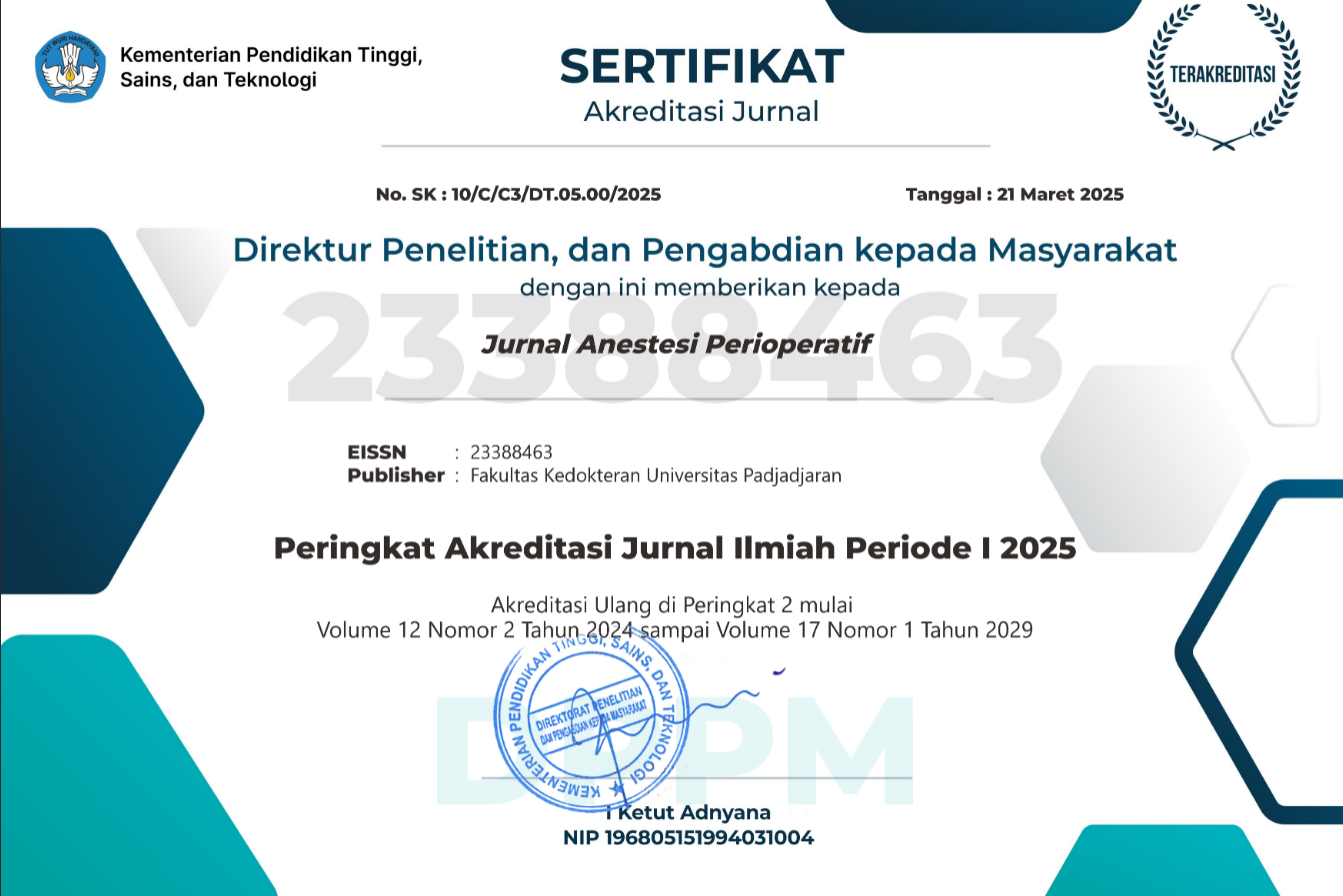Keberhasilan Early Goal-Directed Therapy dan Faktor Pengganggu pada Pasien Sepsis Berat di Instalasi Gawat Darurat Rumah Sakit Dr. Hasan Sadikin Bandung yang Akan Menjalani Pembedahan
Abstract
Early goal directed therapy (EGDT) bertujuan menurunkan morbiditas dan mortalitas pada pasien sepsis berat dan syok sepsis namun pelaksanaannya sering menemukan kendala. Tujuan penelitian ini mengevaluasi keberhasilan EGDT pada pasien sepsis berat di Instalasi Gawat Darurat (IGD) Rumah Sakit Dr. Hasan Sadikin Bandung yang menjalani pembedahan serta mencari faktor-faktor yang memengaruhi keberhasilan EGDT. Penelitian dilakukan dengan metode deskriptif observasional pada bulan Juni–Agustus 2014 dengan subjek penelitian pasien IGD berusia >14 tahun dalam kondisi sepsis berat yang menjalani pembedahan. Keberhasilan EGDT ditentukan berdasar atas pedoman surviving sepsis campaign. Hasil penelitian dari 30 pasien didapatkan 27 pasien berhasil dilakukan EGDT, sedangkan 3 pasien meninggal. Faktor yang memengaruhi EGDT, yaitu faktor medis, kecepatan dalam mendiagnosis sepsis berat, lama pemeriksaan penunjang, faktor koagulasi yang memanjang, dan faktor nonmedis, yaitu lamanya keputusan keluarga, prosedur pengurusan administrasi, dan ketersediaan alat. Simpulan, keberhasilan EGDT di Rumah Sakit Dr. Hasan Sadikin dengan faktor medis dan nonmedis sebagai faktor pengganggu yang berperan dalam keberhasilan pelaksanaannya.
Kata kunci: Early goal directed therapy (EGDT), pembedahan, sepsis berat
The Success of Early Goal-Directed Therapy and its Confounding Factors in Patients with Severe Sepsis Admitted to the Emergency Room of Dr. Hasan Sadikin General Hospital for Surgery
Early goal-directed therapy (EGDT) is conducted to reduce morbidity and mortality in patients with severe sepsis and septic shock. The purpose of this study was to evaluate the success of EGDT in patients with severe sepsis in the emergency room (ER) of Dr. Hasan Sadikin General Hospital Bandung who were going to undergo surgery and the factors that contributed to the success of EGDT. This study was a descriptive observational study that took place in June–August 2014. Subjects were ER patients, aged over 14 years old, who came with severe sepsis condition and were going to undergo surgery. The successful EGDT in this study was determined according to the surviving sepsis campaign (SSC) guideline such as a central venous pressure of 8–12 mmHg, mean arterial pressure of >65 mmHg, and central venous saturation of >70%. In this study, from 30 patients, 27 patients successfully underwent EGDT and the remaining 3 patients did not survive. Factors that affect the implementation of EGDT were divided into two factors: medical and non-medical factors. Medical factors were time needed to diagnose patient with severe sepsis, delay in laboratory findings, and abnormality of coagulation factors. The non-medical factors were family consent, procedures related to health insurance, and the availability of central venous catheter. In conclusions, EGDT is successfully achieved in 90% patients with severe sepsis in Dr. Hasan Sadikin General Hospital Bandung. Factors that contribute to the successful achievement of EGDT include medical and non-medical factors.
Key words: Early goal directed therapy, surgery, severe sepsis
Keywords
Full Text:
PDFArticle Metrics
Abstract view : 4243 timesPDF - 1647 times
This Journal indexed by

JAP is licensed under a Creative Commons Attribution-NonCommercial 4.0 International License
View My Stats



